Aizaz U. Chaudhry
Free-Space Optical (FSO) Satellite Networks Performance Analysis: Transmission Power, Latency, and Outage Probability
Dec 08, 2023
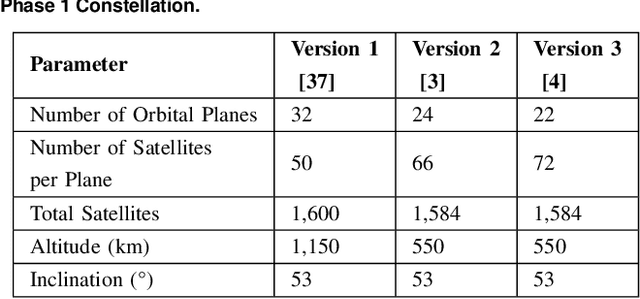

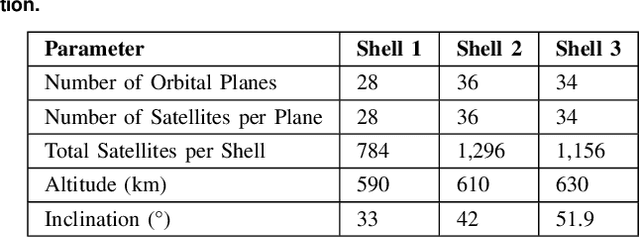
Abstract:In free-space optical satellite networks (FSOSNs), satellites can have different laser inter-satellite link (LISL) ranges for connectivity. Greater LISL ranges can reduce network latency of the path but can also result in an increase in transmission power for satellites on the path. Consequently, this tradeoff between satellite transmission power and network latency should be investigated, and in this work we examine it in FSOSNs drawing on the Starlink Phase 1 Version 3 and Kuiper Shell 2 constellations for different LISL ranges and different inter-continental connections. We use appropriate system models for calculating the average satellite transmission power and network latency. The results show that the mean network latency decreases and mean average satellite transmission power increases with an increase in LISL range. For the Toronto--Sydney inter-continental connection in an FSOSN with Starlink's Phase 1 Version 3 constellation, when the LISL range is approximately 2,900 km, the mean network latency and mean average satellite transmission power intersect are approximately 135 ms and 380 mW, respectively. For an FSOSN with the Kuiper Shell 2 constellation in this inter-continental connection, this LISL range is around 3,800 km, and the two parameters are approximately 120 ms and 700 mW, respectively. For the Toronto--Istanbul and Toronto--London inter-continental connections, the LISL ranges at the intersection are different and vary from 2,600 km to 3,400 km. Furthermore, we analyze outage probability performance of optical uplink/downlink due to atmosphere attenuation and turbulence.
Temporary Laser Inter-Satellite Links in Free-Space Optical Satellite Networks
Aug 23, 2022
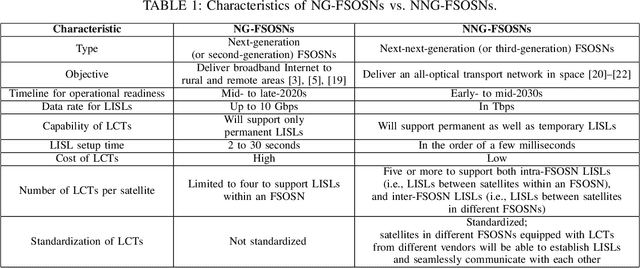


Abstract:Laser inter-satellite links (LISLs) between satellites in a free-space optical satellite network (FSOSN) can be divided into two classes: permanent LISLs (PLs) and temporary LISLs (TLs). TLs are not desirable in next-generation FSOSNs (NG-FSOSNs) due to high LISL setup time, but they may become feasible in next-next-generation FSOSNs (NNG-FSOSNs). Using the satellite constellation for Phase I of Starlink, we study the impact of TLs on network latency in an NG-FSOSN (which has only PLs) versus an NNG-FSOSN (which has PLs and TLs) under different long-distance inter-continental data communications scenarios, including Sydney-Sao Paulo, Toronto-Istanbul, Madrid-Tokyo, and New York-Jakarta, and different LISL ranges for satellites, including 659.5 km, 1,319 km, 1,500 km, 1,700 km, 2,500 km, 3,500 km, and 5,016 km. It is observed from the results that TLs provide higher satellite connectivity and thereby higher network connectivity, and they lead to lower average network latency for the NNG-FSOSN compared to the NG-FSOSN in all scenarios at all LISL ranges. In comparison with the NG-FSOSN, the improvement in latency with the NNG-FSOSN is significant at LISL ranges of 1,500 km, 1,700 km, and 2,500 km, where the improvement is 16.83 ms, 23.43 ms, and 18.20 ms, respectively, for the Sydney-Sao Paulo inter-continental connection. For the Toronto-Istanbul, Madrid-Tokyo, and New York-Jakarta inter-continental connections, the improvement is 14.58 ms, 23.35 ms, and 23.52 ms, respectively, at the 1,700 km LISL range.
On Crossover Distance for Optical Wireless Satellite Networks and Optical Fiber Terrestrial Networks
Jun 06, 2022



Abstract:Optical wireless satellite networks (OWSNs) can provide lower latency data communications compared to optical fiber terrestrial networks (OFTNs). The crossover function enables to calculate the crossover distance for an OWSN and an OFTN. If the distance between two points on Earth is greater than the crossover distance, then switching or crossing over from the OFTN to the OWSN results in lower latency for data communications between these points. In this work, we extend the previously proposed crossover function for a scenario such that intermediate satellites (or hops) are incorporated between ingress and egress satellites in the OWSN for a more realistic calculation of the crossover distance in this scenario. We consider different OWSNs with different satellite altitudes and different OFTNs with different optical fiber refractive indexes, and we study the effect of the number of hops on crossover distance and length of a laser inter-satellite link (LISL). It is observed from numerical results that crossover distance increases with number of hops, and this increase is higher at higher satellite altitudes in OWSNs and lower refractive indexes in OFTNs. Furthermore, an inverse relationship between crossover distance and length of a LISL is observed. With increase in number of hops, the length of a LISL decreases as opposed to the crossover distance.
Link Budget Analysis for Free-Space Optical Satellite Networks
Apr 27, 2022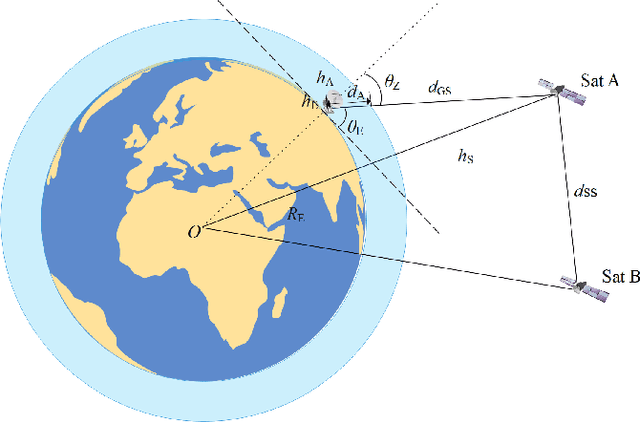
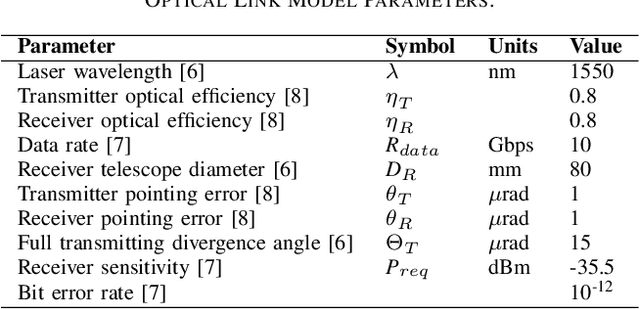


Abstract:Free-space optical satellite networks (FSOSNs) will employ free-space optical links between satellites and between satellites and ground stations, and the link budget for optical inter-satellite links and optical uplink/downlink is analyzed in this paper. The satellites in these FSOSNs will have limited energy and thereby limited power, and we investigate the effect of link distance and link margin on optical inter-satellite link transmission power, and the effect of slant distance, elevation angle, and link margin on optical uplink/downlink transmission power. We model these optical links and compute the results for various parameters. We observe that the transmission power increases when the link distance increases for inter-satellite and uplink/downlink communications, while the transmission power decreases when the elevation angle increases for uplink/downlink transmission. We also observe an inverse relationship between link margin and link distance. Furthermore, we highlight some practical insights and design guidelines gained from this analysis.
The Digital Divide in Canada and the Role of LEO Satellites in Bridging the Gap
Mar 16, 2022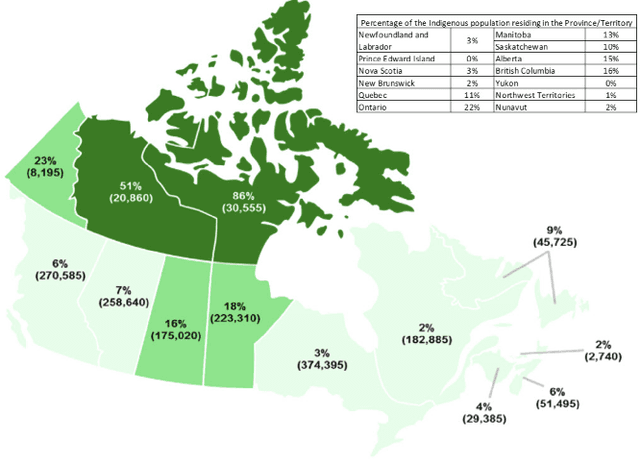
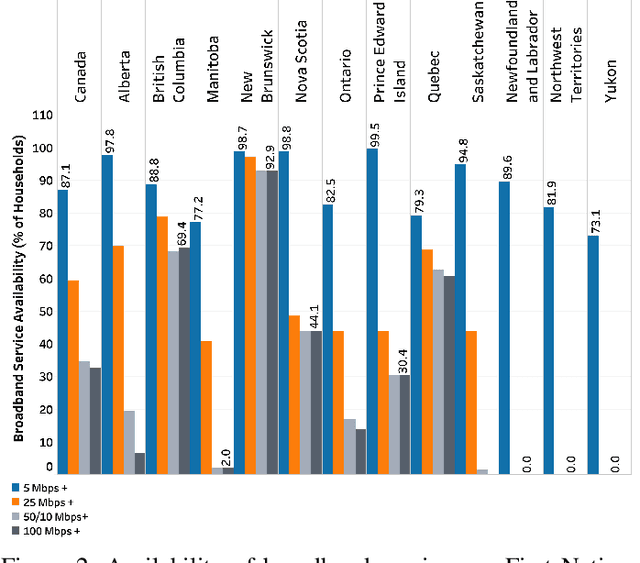

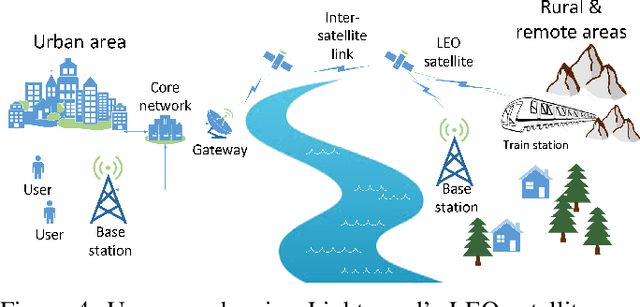
Abstract:Overcoming the digital divide in rural and remote areas has always been a big challenge for Canada with its huge geographical area. In 2016, the Canadian Radio-television and Telecommunications Commission announced broadband Internet as a basic service available for all Canadians. However, approximately one million Canadians still do not have access to broadband services as of 2020. The COVID-19 pandemic has made the situation more challenging, as social, economic, and educational activities have increasingly been transferred online. The condition is more unfavorable for Indigenous communities. A key challenge in deploying rural and remote broadband Internet is to plan and implement high-capacity backbones, which are now available only in denser urban areas. For any Internet provider, it is almost impossible to make a viable business proposal in these areas. For example, the vast land of the Northwest Territories, Yukon, and Nunavuts diverse geographical features present obstacles for broadband infrastructure. In this paper, we investigate the digital divide in Canada with a focus on rural and remote areas. In so doing, we highlight two potential solutions using low Earth orbit (LEO) constellations to deliver broadband Internet in rural and remote areas to address the access inequality and the digital divide. The first solution involves integrating LEO constellations as a backbone for the existing 4G/5G telecommunications network. This solution uses satellites in a LEO constellation to provide a backhaul network connecting the 4G/5G access network to its core network. The 3rd Generation Partnership Project already specifies how to integrate LEO satellite networks into the 4G/5G network, and the Canadian satellite operator Telesat has already showcased this solution with one terrestrial operator, TIM Brasil, in their 4G network.
When to Crossover from Earth to Space for Lower Latency Data Communications?
Mar 01, 2022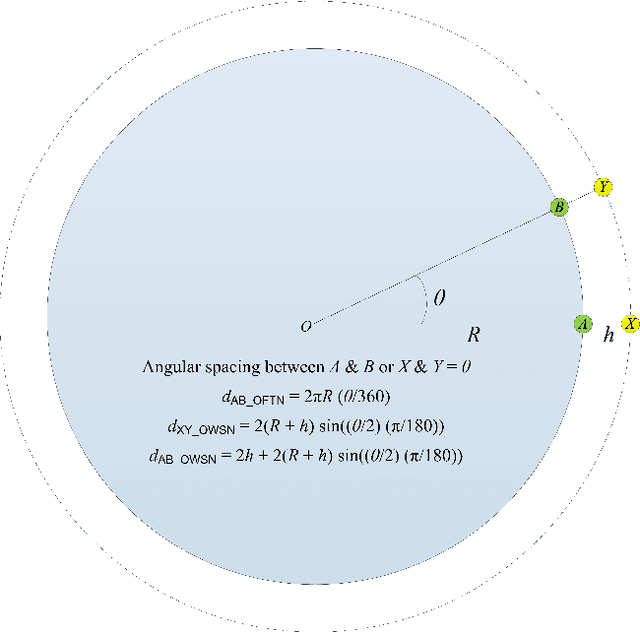
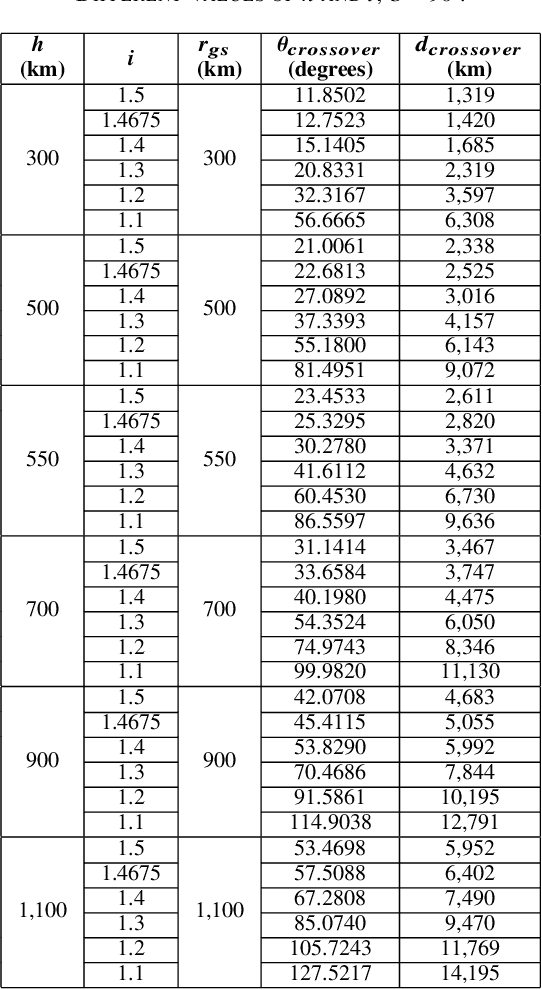

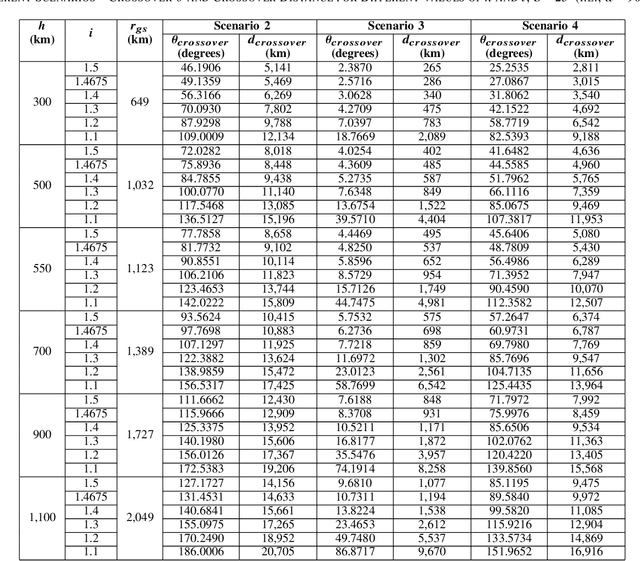
Abstract:For data communications over long distances, optical wireless satellite networks (OWSNs) can offer lower latency than optical fiber terrestrial networks (OFTNs). However, when is it beneficial to switch or crossover from an OFTN to an OWSN for lower latency data communications? In this work, we introduce a crossover function that enables to find the crossover distance, i.e., a distance between two points on the surface of the Earth beyond which switching or crossing over from an OFTN to an OWSN for data communications between these points is useful in terms of latency. Numerical results reveal that a higher refractive index of optical fiber (or $i$) in an OFTN and a lower altitude of satellites (or $h$) in an OWSN result in a shorter crossover distance. To account for the variation in the end-to-end propagation distance that occurs over the OWSN, we examine the crossover function in four different scenarios. Numerical results indicate that the crossover distance varies with the end-to-end propagation distance over an OWSN and is different for different scenarios. We calculate the average crossover distance over all scenarios for different $h$ and $i$ and use it to evaluate the simulation results. Furthermore, for a comparative analysis of OFTNs and OWSNs in terms of latency, we study three different OFTNs having different refractive indices and three different OWSNs having different satellite altitudes in three different scenarios for long-distance inter-continental data communications, including connections between New York and Dublin, Sao Paulo and London, and Toronto and Sydney.
Phasing Parameter Analysis for Satellite Collision Avoidance in Starlink and Kuiper Constellations
Sep 28, 2021
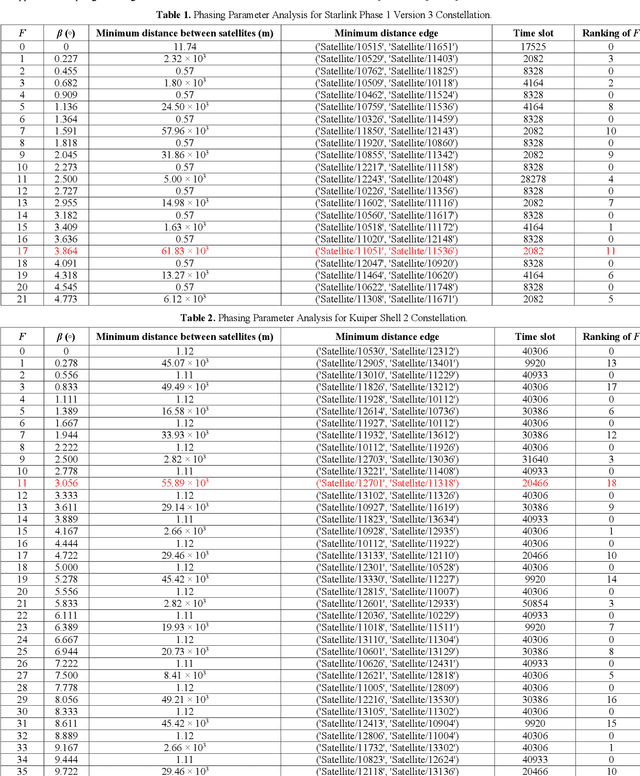
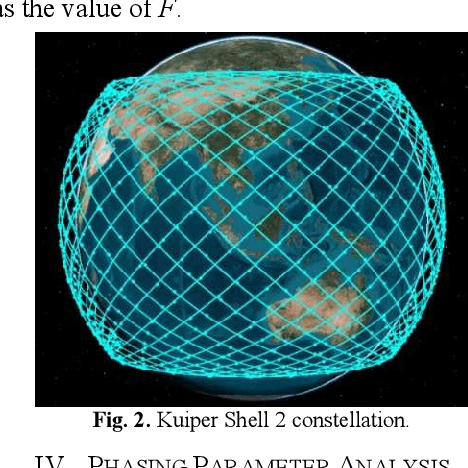

Abstract:The phasing parameter F determines the relative phasing between satellites in different orbital planes and thereby affects the relative position of the satellites in a constellation. The collisions between satellites within the constellation can be avoided if the minimum distance among them is large. From among the possible values of F in a constellation, a value of F is desired that leads to the maximum value of the minimum distance between satellites. We investigate F for two biggest upcoming satellite constellations including Starlink Phase 1 Version 3 and Kuiper Shell 2. No existing work or FCC filing provides a value of F that is suitable for these two constellations. We look for the best value of F in these constellations that provides the maximum value of the minimum distance to ensure intra-constellation avoidance of collisions between satellites. To this end, we simulate each constellation for each value of F to find its best value based on ranking. Out of the 22 and 36 possible values of F for Starlink Phase 1 Version 3 and Kuiper Shell 2, respectively, it is observed that the best value of F with highest ranking is 17 and 11 that leads to the largest minimum distance between satellites of 61.83 km and 55.89 km in these constellations, respectively.
Optical Wireless Satellite Networks versus Optical Fiber Terrestrial Networks: The Latency Perspective
Jun 14, 2021
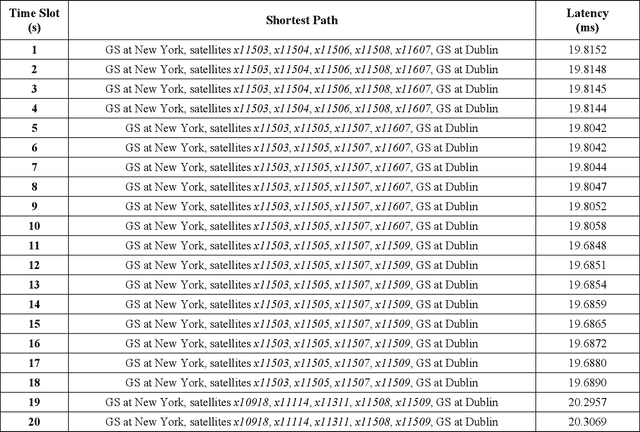
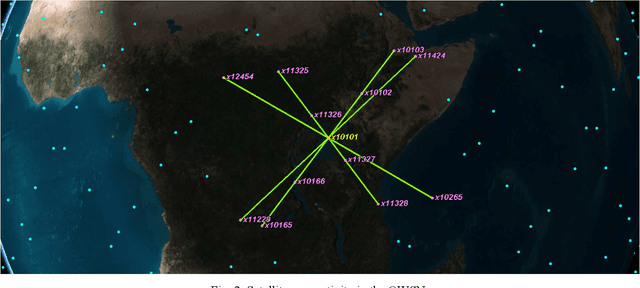

Abstract:Formed by using laser inter-satellite links (LISLs) among satellites in upcoming low Earth orbit and very low Earth orbit satellite constellations, optical wireless satellite networks (OWSNs), also known as free-space optical satellite networks, can provide a better alternative to existing optical fiber terrestrial networks (OFTNs) for long-distance inter-continental data communications. The LISLs operate at the speed of light in vacuum in space, which gives OWSNs a crucial advantage over OFTNs in terms of latency. In this paper, we employ the satellite constellation for Phase I of Starlink and LISLs between satellites to simulate an OWSN. Then, we compare the network latency of this OWSN and the OFTN under three different scenarios for long-distance inter-continental data communications. The results show that the OWSN performs better than the OFTN in all scenarios. It is observed that the longer the length of the inter-continental connection between the source and the destination, the better the latency improvement offered by the OWSN compared to OFTN.
Laser Inter-Satellite Links in a Starlink Constellation
Feb 26, 2021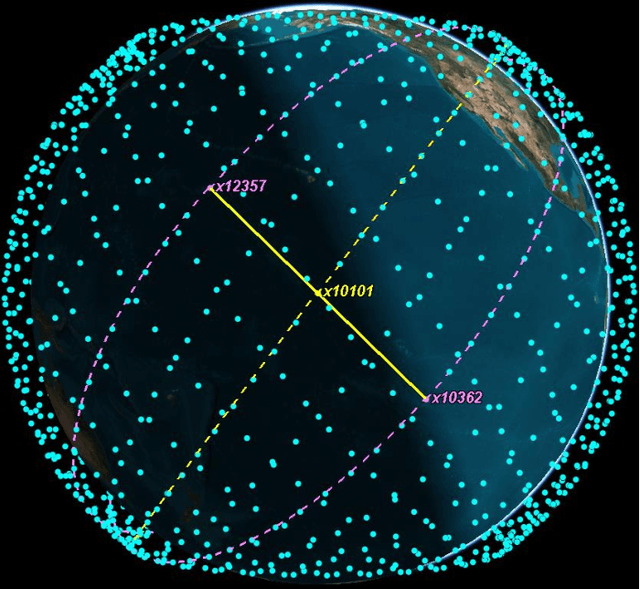



Abstract:Laser inter-satellite links (LISLs) are envisioned between satellites in upcoming satellite constellations, such as Phase I of SpaceX's Starlink. Within a constellation, satellites can establish LISLs with other satellites in the same orbital plane or in different orbital planes. We present a classification of LISLs based on the location of satellites within a constellation and the duration of LISLs. Then, using satellite constellation for Phase I of Starlink, we study the effect of varying a satellite's LISL range on the number of different types of LISLs it can establish with other satellites. In addition to permanent LISLs, we observe a significant number of temporary LISLs between satellites in crossing orbital planes. Such LISLs can play a vital role in achieving low-latency paths within next-generation optical wireless satellite networks.
A Fast Heuristic for Gateway Location in Wireless Backhaul of 5G Ultra-Dense Networks
Feb 22, 2021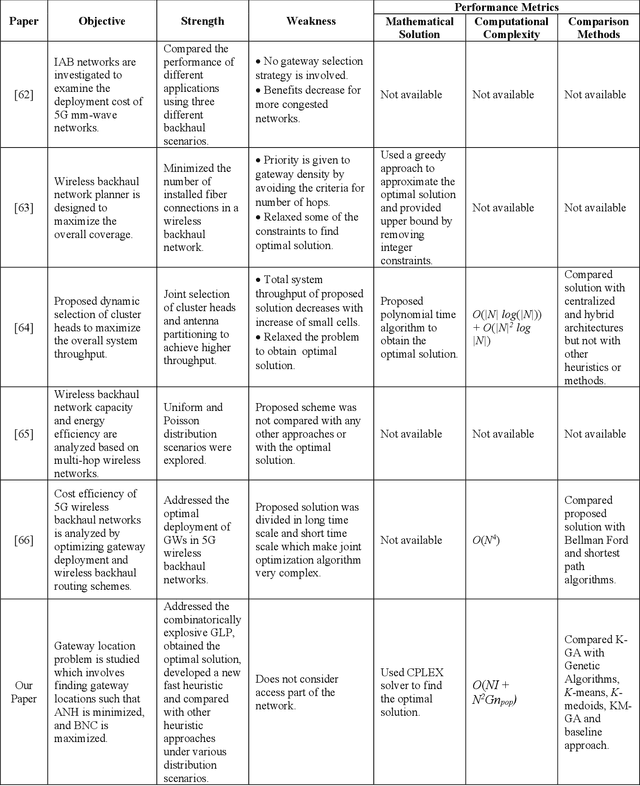

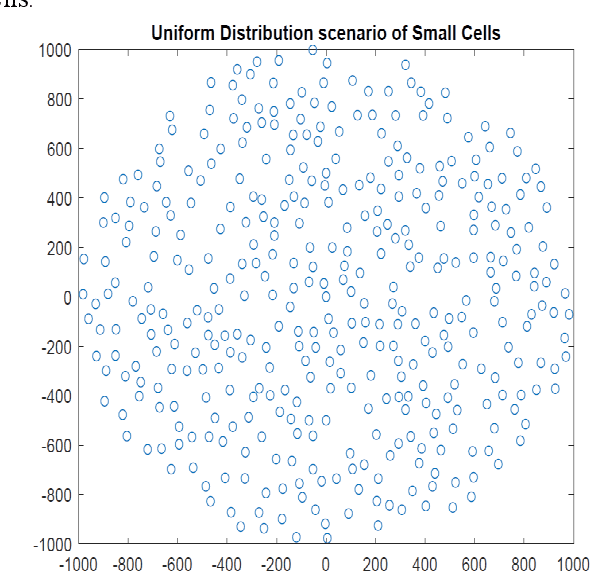

Abstract:In 5G Ultra-Dense Networks, a distributed wireless backhaul is an attractive solution for forwarding traffic to the core. The macro-cell coverage area is divided into many small cells. A few of these cells are designated as gateways and are linked to the core by high-capacity fiber optic links. Each small cell is associated with one gateway and all small cells forward their traffic to their respective gateway through multi-hop mesh networks. We investigate the gateway location problem and show that finding near-optimal gateway locations improves the backhaul network capacity. An exact p-median integer linear program is formulated for comparison with our novel K-GA heuristic that combines a Genetic Algorithm (GA) with K-means clustering to find near-optimal gateway locations. We compare the performance of KGA with six other approaches in terms of average number of hops and backhaul network capacity at different node densities through extensive Monte Carlo simulations. All approaches are tested in various user distribution scenarios, including uniform distribution, bivariate Gaussian distribution, and cluster distribution. In all cases K-GA provides near-optimal results, achieving average number of hops and backhaul network capacity within 2% of optimal while saving an average of 95% of the execution time.
 Add to Chrome
Add to Chrome Add to Firefox
Add to Firefox Add to Edge
Add to Edge